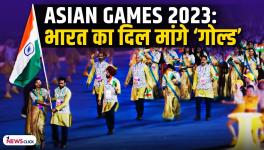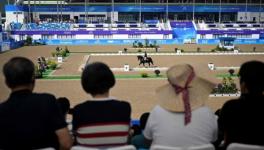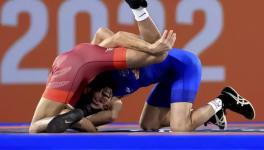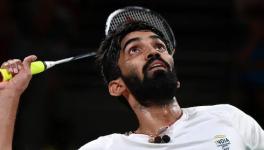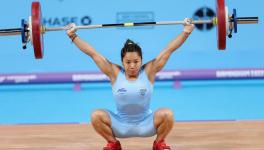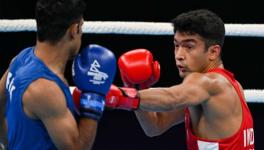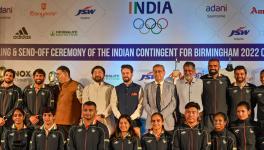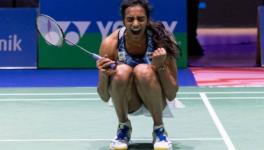The Manika Batra Secret: What Makes the Indian a Giant killer in World TT
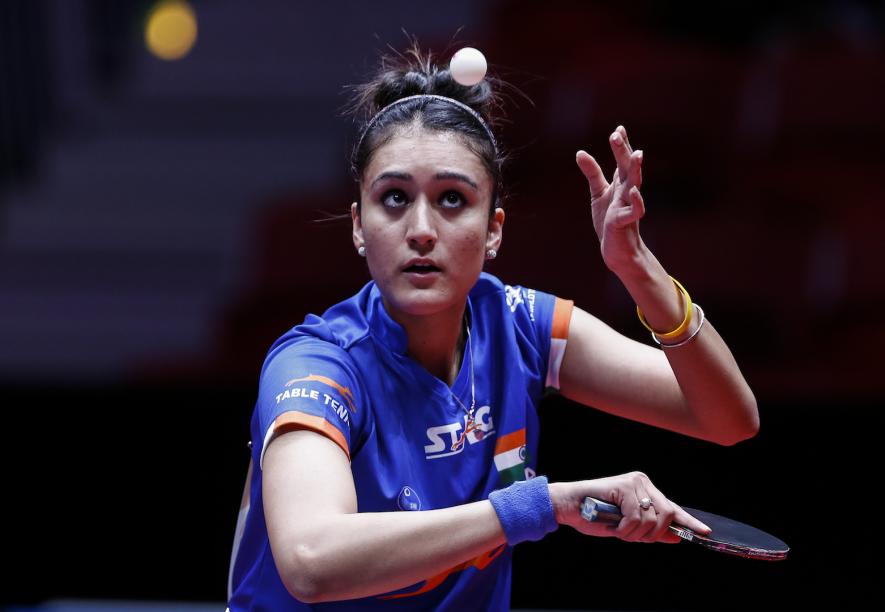
Manika Batra, who won an historic bronze medal at the Asian Games in Jakarta recently, is India's highest ranked women table tennis player (Pic: IANS)
Timing is the eternal friend and foe of a sportsperson. It’s the fleeting moment of perfection that defines sublime strokeplay, or an exquisite volley, from the ordinary or a desperate lunge. This fine edge of perfect timing that shreds the opponents in the heat of the battle is honed on the whetstone of monotonous practice, away from the glitz of awards and accolades.
In racket sports, that perfect timing is achieved through boring repetition of a drill until it gets hard coded in the muscle memory till a stroke becomes a function of instinct rather than reaction. It’s this aspect of table tennis that the Chinese players have mastered better than the rest, making them the most dominant force in the sport. And it’s this particular aspect of the game that India’s table tennis sensation, Manika Batra, 23, is keen to hone and sharpen further as she sets her sights to break into the top 40 of the world rankings, dominated by Chinese, Japanese and Korean players with a sprinkling of Europeans.
That she, at No. 56, is the highest-ranked Indian women’s player in the world is matter of little academic interest to Batra and her long-time coach Sandeep Gupta. “My target is to break into the top 40 before the end of the year. For that to happen, I have to beat players of Chinese origin on a regular basis, who are now playing for a lot of other countries,” she says. “We usually react to their stroke play, but the Chinese players are always in position well in advance to execute their strokes. It seems they always have that little extra time to hit the ball.”
Also Read | In the Throes of a Power Struggle, Indian Kabaddi Gets a New Pro League
For Batra, the stupendous performance at the Gold Coast Commonwealth Games and the historic bronze medal at the Jakarta Asian Games is a thing of past. It’s done and dusted. It has brought “fame and recognition to her sport”, but for now it’s back to the grind at the Hansraj Model School academy in New Delhi.
On the day we met her, Batra was working on a new forehand service. Each practice session involves playing thousands of balls fed by her coach, service practice, fitness and reaction time programmes. It’s hard work, often carried out in solitude despite the 25 odd other trainees going about their routine drills on the eight tables inside the brightly lit hall, the walls of which are covered with billboards, highlighting some of the defining moments of the academy’s wards.
The academy, established by Gupta in 1996, was the first of its kind in the country. Since then, it has churned out several players who have donned the India colours in different age groups, though Batra and Olympians Neha Agarwal and Anthony Amalraj are his most famous protégés.
Gupta, a self-taught player who hails from Muzaffarnagar in western UP, was a member of the state team that won gold in the junior national championship in 1987. As a player, Gupta had an unconventional game that was marked with heavy topspins and deft placements instead of relying on brute power, while being left-handed added to his deceptiveness on the table.
Batra’s game mirrors the philosophy of her mentor’s fairly closely. Much has been written about how she dexterously uses the long-pimpled rubber on the backhand, which she mixes up by twirling the racket in between the rallies. Few have, however, observed how her unconventional backhand, which is more like a short-armed stab halfway between a conventional slice and a jab, helps her put the “trick rubber” to lethal effect.
Trick rubbers have been around since their first appearance in the early ’80s, but mastering it for using it effectively remains a dark art. Batra was introduced to the long-pimpled rubber by her coach when she was just eight. But that doesn't imply she is a one-trick pony.
Also Read | Jithin Paul vs NADA: Doping and the Indian Athlete
She has a powerful forehand, a variety of services, and plays the ball early on the bounce, almost in front of her body. Her long reach, due to her height, she is six feet tall, gives her some added advantage. It’s these aspects that has helped Batra make inroads into the established order by scalping top ranked players such as former world No. 4 Feng Tainwei and Mengeyu Yu at the Commonwealth Games, en route the gold medal. Yet, she is still a work in progress, insists Gupta.
“She has got the momentum behind her after the Commonwealth and Asian Games. We want to build on that to keep the momentum going into the next series of four world ranking tournaments starting in October,” says Gupta. “We are also working on to improve her reaction time and fitness. To beat the Chinese, who play much closer to the table compared to Europeans and take the ball very early, she needs to react quicker. And, she has to avoid injuries.”
Fitness is a keyword that Batra repeats during our conversation. A couple of years back, in the run-up to the Rio Olympics, she was laid low by a lower back injury that impeded her progress. Her height, which works to her advantage, also creates a different kind of problem—she has to bend more in comparison to short-statured players which puts extra load on her lower back and upper legs.
It was her weak upper legs that resulted in lower back spasms. “Since the Rio Games I have been devoting extra hours just on fitness. The two main areas of focus are my legs and the core,” says Batra. That apart, a set of 10 drills (to improve reaction time) which Gupta and Batra picked up during the 21-day exposure-cum-training trip to China prior to the Asian Games are now part of her daily routine.
Also Read | Sardar Singh: India’s First World Class Modern Hockey Star
Gupta also points out to a less discerning side of her game that makes Batra stand out from the rest of her Indian contemporaries that only an astute observer will be able to figure out.
“She is very quick to adapt to a new style of play even in tournaments,” says the coach. To illustrate his point, he brings up the example of playing against players of Chinese origin. “To beat them, you have to meet the ball on the bounce, instead of top of the bounce. Most Indian players are used to the latter, but against the Chinese or Japanese players that doesn’t work. So, to take the ball on the bounce you have to execute the stroke in front of the vertical plane of the body, which in turn mean shorter backswing. Now, that is different style of play.”
Last Sunday, that’s exactly what the coach was trying to drill into her repertoire during the long multi-ball practice session.
In more ways than one, Batra’s ascent in the world of table tennis is also an ode to the efforts and perseverance of Kohli brothers—Vivek and Rakesh. The great showing by the current crop of players such as Achanta Sharath Kamal, G Sathiyan, Manav Thakkar, Amalraj and Batra, and a host of junior internationals, is, in essence, a returns on investment that Stag International has made over the years in the grassroots development programme for close to two decades. As on date, the TT equipment manufacturer directly supports 65 academies across the country, including the one at the Hansraj Model School, which was the first successful model of private collaboration.
“We have a multi-layered support programme right from the time a child joins one of our academies,” says Vivek, who was a former India ranked player and multiple national level medal winner. “Our standard support package for a beginner includes racket blades, a set of six rubber, t-shirts, shorts, shoes and track suit. Once these youngsters start making progress through various age groups, we increase the quantity of playing equipment and kit support."
Also Read | India at Asian Games 2018: The Truth Behind Government's Claims
For the record, they adopted Sharath Kamal when he was just 12 and continued to support him until he relocated to Germany. The equipment manufacturer also works closely with 28 state federations for organising state ranking tournaments.
“We have come a long way since our first sponsorship of Sujay Ghorpade and S Sriram in the ’80s. Yet, a lot to be there remains done,” says Vivek.
The next step in the development programme is the setting up of four regional high-performance centres across the country where elite players from the region can train under foreign and domestic coaches. Plans are afoot to convert the 20-table academy in Sonepath into the first high-performance centre in North India.
With Indian players inching closer to the top half of the global field, the sport seems to have stoked the faith of a passionate bunch of people who seem to know where to focus — the grassroots. Things indeed look bright for TT in the country and Batra looks set to play the role of a spearhead in the coming years, leading the Indian charge into a Chinese bastiion.
Get the latest reports & analysis with people's perspective on Protests, movements & deep analytical videos, discussions of the current affairs in your Telegram app. Subscribe to NewsClick's Telegram channel & get Real-Time updates on stories, as they get published on our website.









